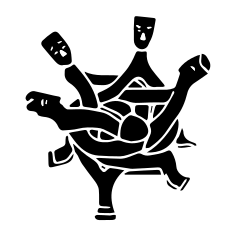brief therapy
What is Brief Therapy?
Brief Therapy is frequently described as therapy/counselling with a specific time scale (i.e. time limited). It is also known as therapy, which has been arranged for a set period usually consisting of 6-12 sessions. This means that therapy sessions that exceed 12 sessions maybe defined as long-term counselling/therapy.
How does it work?
The application of brief therapy frequently involves assessing the client problem(s)and in partnership with the client, develop short-term goals to help the client manage,resolve or alleviate their problem. For example, the formulation of short-term goals to assist the client to effectively manage problems, which may relate to depression or anxiety. This may include using a variety of psychological interventions such as relaxation and guided imagery techniques to assist the process.
What benefits can be expected?
The benefits of brief therapy are that it is conducted within the here and now (current life circumstances), it’s ‘brief’ (i.e. 6-12 sessions) and it explores the most effective approach in treating a client problem within the set time-scale. Brief therapy can also help clients to save on long-term treatment costs and it does not cause much disruption to your daily life.
Brief Therapy & Modern Life
As the demand of modern life increases, the rate of people experiencing depression and anxiety disorders seem to be reaching epidemic proportions. Having to work longer hours, adjust to job insecurity, cope with increased pollution and related environmental changes are among some of the factors that impact on modern life. Advances in technology and information overload continue to evoke and contribute to the increased levels of pressure and related stress. These changes can also be correlated to increased instability in family life and the related reduction in social and leisure activities, which evidently creates additional stress.
Brief Therapy is considered by many to be the treatment of choice for clients experiencing a range of common distresses as described in this section. With the growth of the ‘micro-wave culture’, health reports continue to illustrate that the levels of stress related illnesses, anxiety disorders and problems which relate to anger are on the increase.
Brief Therapy at the PUMB
The PUMB main approaches to psychological therapy includes the application of Cognitive Behavioural Therapy (CBT) and Solution-Focused Brief Therapy (SFBT). These approaches are frequently combined with relaxation, guided imagery/visualisation techniques for a range of client problems. The combination of these approaches/interventions frequently enhance the process of therapy, which is likely to contribute to swift changes and positive outcomes.
Contact for more information
contact meWhat is Guided Imagery?
Guided Imagery/Visualisation is the use of hypnotic skills. One of the easiest ways to use guided imagery in therapy is to start with a relaxation induction. There are a number of ways to induce relaxation. For example, a relaxation induction can be initiated, which requires the practitioner to count from 1 to 20 combined with a basic breathing exercise, which helps the client experience a state of relaxation.
Most clients enter therapy with a degree of emotional distress or anxiety and the use of guided imagery during these initial stages can produce immediate relief from such emotional and physical symptoms, thus helping the client to calm down.
Clients that feel anxious or distressed prior to or during therapy should note that it is impossible to be relaxed and anxious at the same time. If a client has experienced guided imagery or hypnosis during any aspect of therapy they are likely to discover and appreciate that therapeutic change can be experienced quite early in the process. Most clients are also likely to feel encouraged that their problem or concern can change through the process of therapy.
What benefits can be expected?
The three main reasons for using guided imagery in therapy are:
- Guided imagery is an effective therapeutic tool that can be used to help clients calm down from intense emotional and physiological symptoms.
- The use of guided imagery is also an effective intervention to help clients detraumatise from traumatic experiences (i.e. flashbacks, abuse and post traumatic stress).
- Guided imagery/hypnosis is frequently used to help clients rehearse new or desired behaviour(s).
NB: Guided imagery/hypnosis are deemed as effective therapeutic tools and are not to be considered as therapy or counselling.
Cognitive Behavioural Therapy
Cognitive Behavioural Therapy (CBT) is based on the premise that a person’s thoughts influence feelings and behaviour. Behaviour therapists see negative patterns of thought as a cause for a variety of conditions including depression or anger and therefore seeks to replace these negative patterns with more positive ones.
CBT Approach
Cognitive behaviour therapy is a combination of cognitive therapy and behavioural therapy. It is considered to be a ‘here and now’ type of psychotherapy and avoids the scrutiny of past events. It recognises the influence of past events may have on thoughts and behaviour and seeks to resolve problems in the present context.
How Can It Help?
Cognitive behaviour therapy can help to solve a wide range of problems such as depression, anxiety, obessive compulsive disorders, anger and alcohol/drug abuse, and in conjunction with medication, depending on the type and severity of the condition that is being addressed.
Solution Focused Brief Therapy
Solution Focused Brief Therapy (SFBT) is a ‘here and now’ type of psychotherapy that places emphasis on the present and future. Rather than analysing problems, therapists will attempt to engage the client in conversation about potential solutions, operating from the viewpoint that change is not only possible but inevitable. It is a distinctly positive approach to psychotherapy.
SFBT Approach
Solution focused brief therapy is part of the Systems therapy approach. Therapists encourage the client to talk about solutions and believe that spending too much time thinking about problems contributes to its perpetuation, thus distracting the client from formulating solutions to their problem(s).
How Can It Help?
Solution focused brief therapy can be used for a variety of problems such as anxiety, depression and relationship problems. SFBT help clients to gain more self-awareness when experiencing difficult life transitions.
Effective Stress Buster Sessions
We all experience stress from time to time and with the evolution of modern society, stress has become very difficult to manage. If you are an employee, parent or student experiencing ongoing stress, then perhaps what you need is a Stress Buster Session. The PUMB provides Effective Stress Buster Sessions for a range of stress related problems.
How does it work?
Sessions are conducted with a minimum of 3 people and a maximum of 10 per session (we can facilitate larger groups upon request). Participants are not required to express their individual stress experiences as it is not group therapy. The sessions are deemed as practical workshops, enabling you to gain a further insight into stress management, develop skills to self-manage it and experience the powerful affects of relaxation and guided imagery.
In just 40 minutes you will achieve a better understanding of how stress impacts on the mind-body system, develop the key essential skills to reduce related symptoms and experience the immediate calming affects of relaxation and guided imagery techniques. The benefits from these sessions on the mind-body system are invaluable. For additional information, just click on the link below and download the leaflet.
Book an appointment
Please contact me via the contact link below
book here
